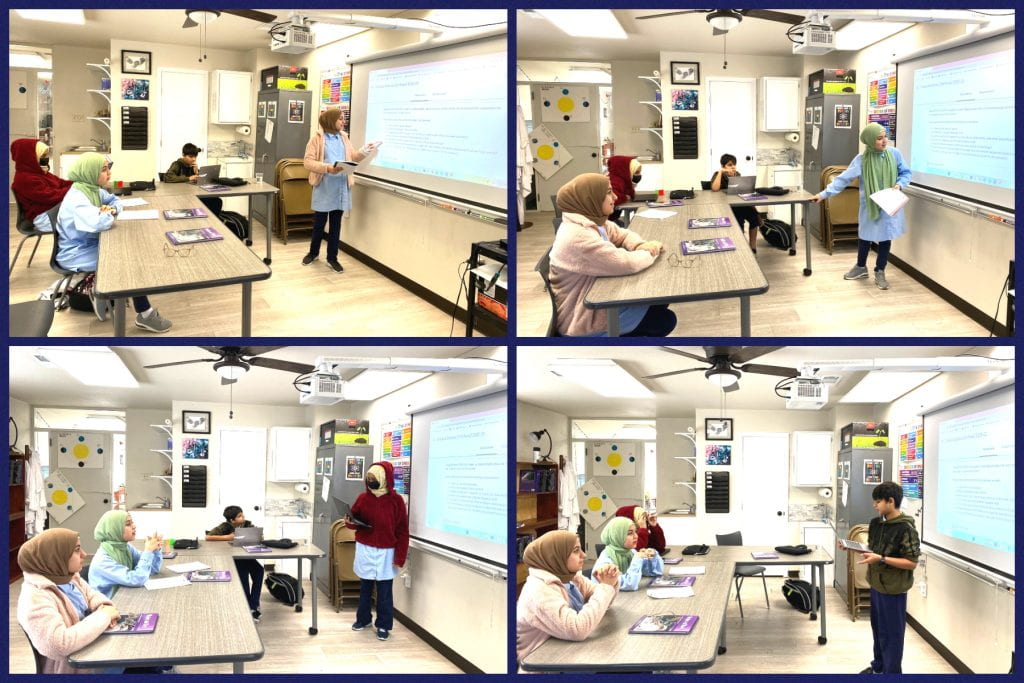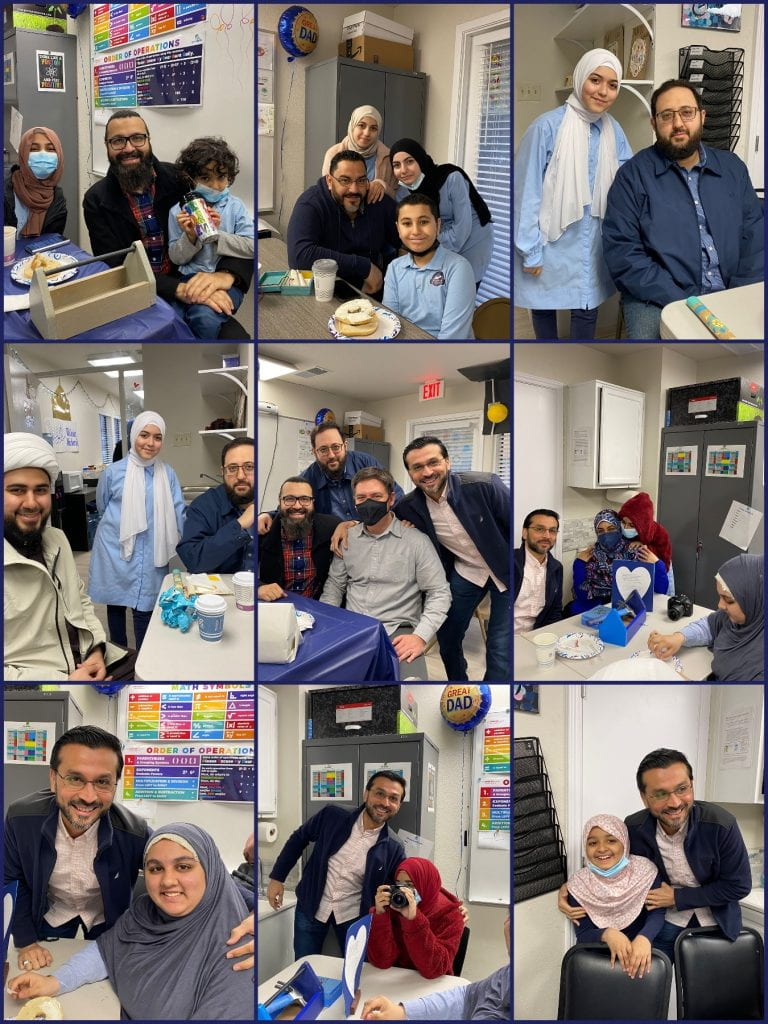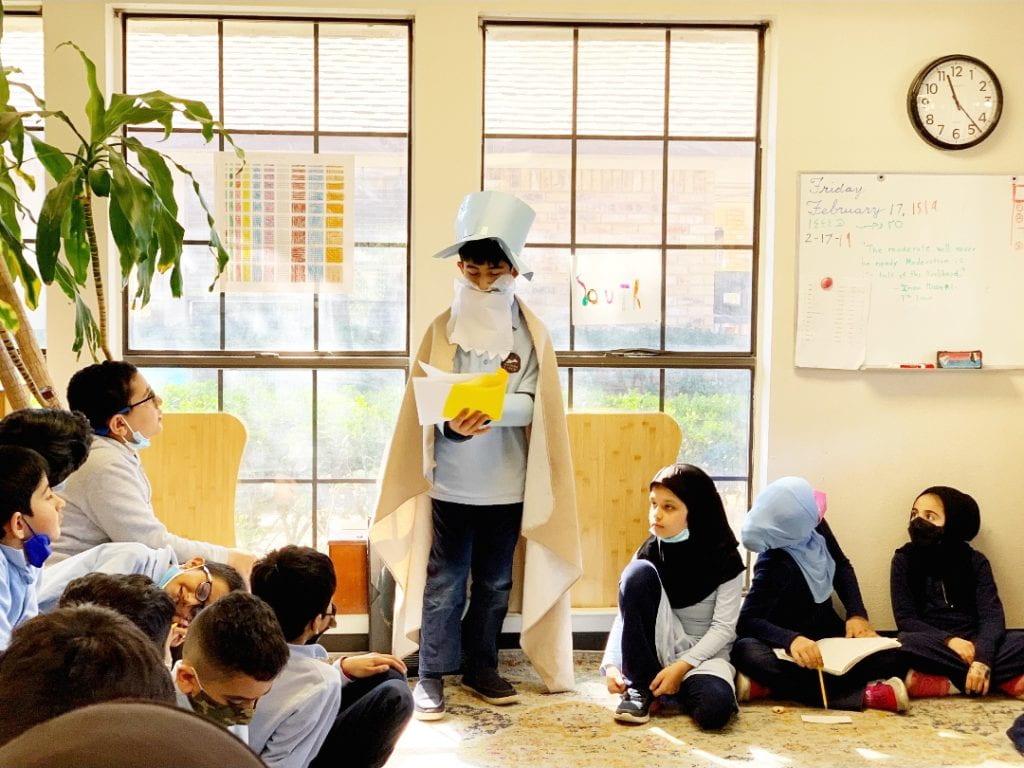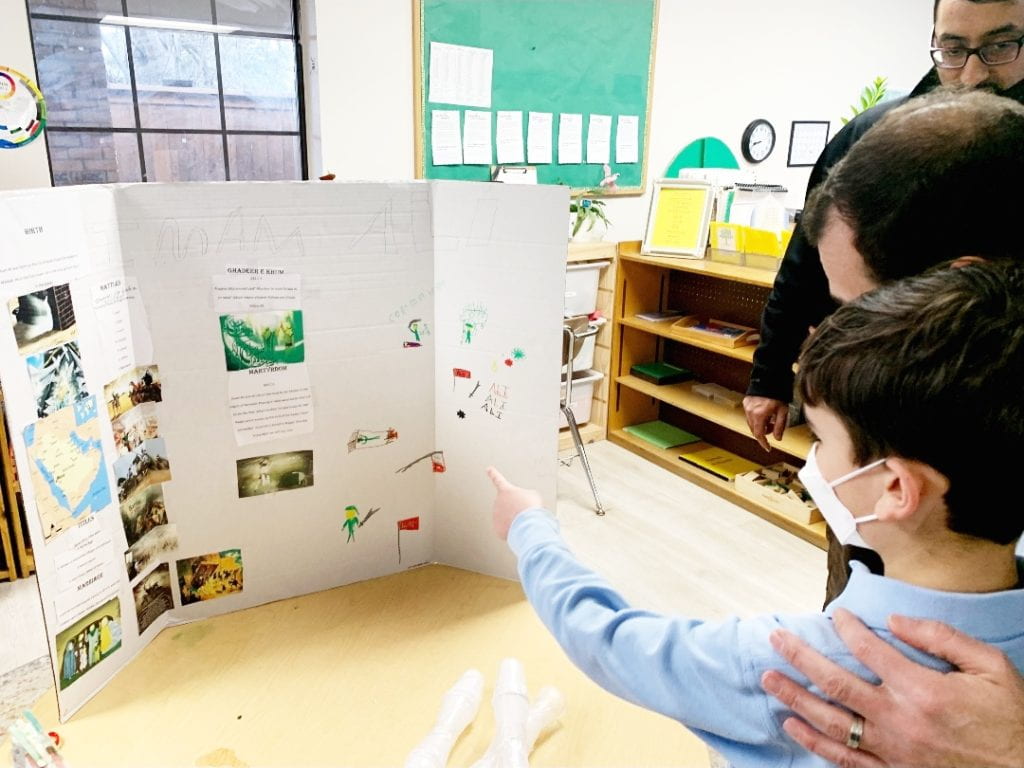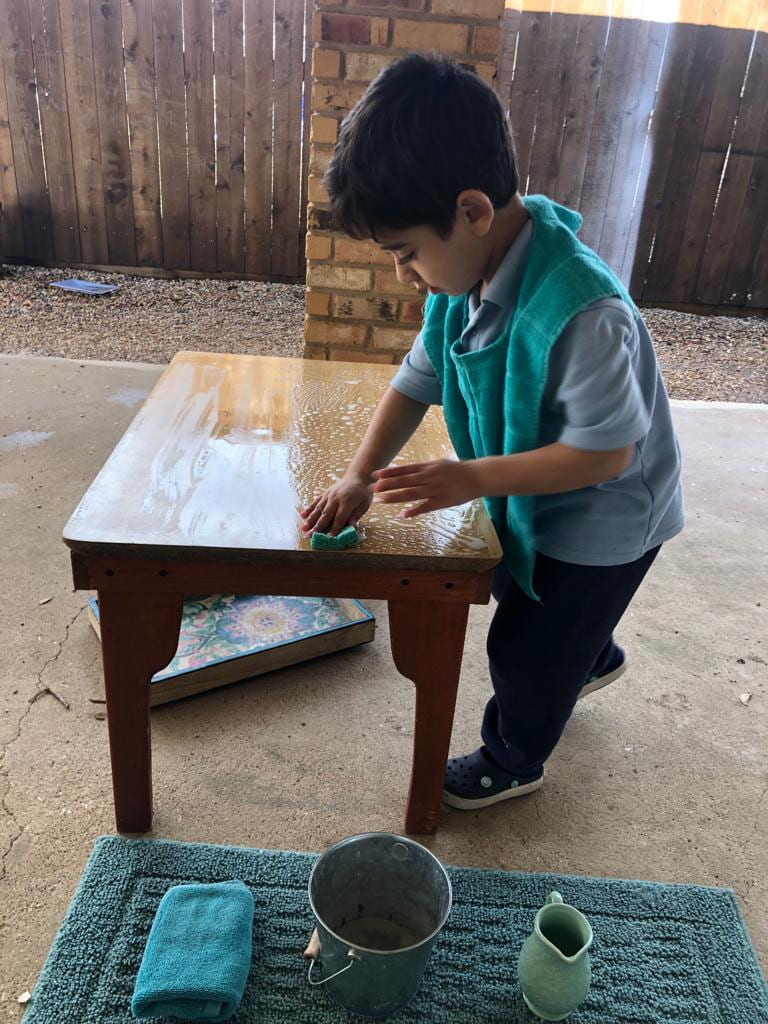February 2023 Quran Studies News
By Mrs. Fadia Ali, Quran Studies teacher

This is a summary of your children’s Qur’an work for the month of February:
Primary:
Level one: Children are still Practicing Surah Al Qadrالقَدر & Al Masad المَسَد in addition to reinforcing the previously learned Surahs.
Level two: Children are still practicing Surah Al Takathurالتَكاثُر & Surah Al Teen التين in addition to reinforcing the previously learned Surahs. They also practiced Duaa al Hasanah الحَسَنَة (All Dua’as are from the Noble Qur’an).
In these two Primary levels we usually focus on the correct pronunciation of the Arabic letters and words and on the correct memorization of a number of small Surahs and Dua’as.
Elementary:
Group One & Two (level one Qur’an): Children continued to practice reading small Surahs from the Holy Quran after they finished learning Arabic reading grammars, Alhamdulillah.
Children who joined Wisdom Academy at the Elementary level are still working on memorizing Ayah Al Kursi آية الكرسي (part one).
Group Three (level two Qur’an): Children are still practicing Surah Al Brooj البُرُوج with Surah Al Fajr الفجر, and they memorized some Arabic vocabulary (days of the week); they also started writing some Arabic words, although, our main focus at this level is reading.
Group Four and Five (level three Qur’an): Children practiced part one of Surah Hasher الحشر as a preparation to recite it on Maulid Al Imam Al Hujja (عَجّل). Insha’Allah, they also continued practicing writing and memorizing new Qur’an vocabulary (clothing & housing).
Our focus for the rest of this year for groups Four and Five will be mostly on writing and reading. Our goal is to help children learn the most efficient way of Arabic writing, help them develop a sense of direction in their Arabic writing (which is the opposite of their English writing), and develop a sense of the right size of the Arabic written words.
Middle School:
6th grade-level 1: Students are still improving their handwriting and reading skills by practicing Ayah Al Kursi الكُرسِي أيَة and writing and memorizing many Qur’an words.
Our focus for the rest of this year will be mostly on writing and reading for level 1 of the 6th grade. Our goal is to help students learn the most efficient way to write the Arabic language.
6th grade-level 2: Students finished memorizing Surah Al Waqhiah الواقِعة Alhamdulillah and started practicing the first part of Surah Yaseen يَس. They also continued analyzing and translating verses from the Holy Quran based on Arabic language grammars which they learned previously.
8th grade-level 1: Group 1 are still working on improving their writing and reading skills by practicing Ayat Al Taharah الطَهَارة of Surah Al Ma’idah المَائِدة and writing and memorizing more Quran vocabulary such as pointer and sentence starter words, etc. In addition to that, Group 1A has learned basic grammar lessons (the Arabic noun sentence), and Group 1B has practiced its previously learned grammar lessons (such as past tense’s doer indicators, etc).
8th grade- level 2: Students have finished memorizing Ayat Al Hajj الحج of Surah Al Baqharah البقرة and started practicing Ayat Al Taharah الطَهَارة of Surah Al Ma’idah المَائِدة. They also learned a new grammar lesson (Forbidding) and memorized a new vocabulary list that comes with the lesson and many other words (e.g. housing).







